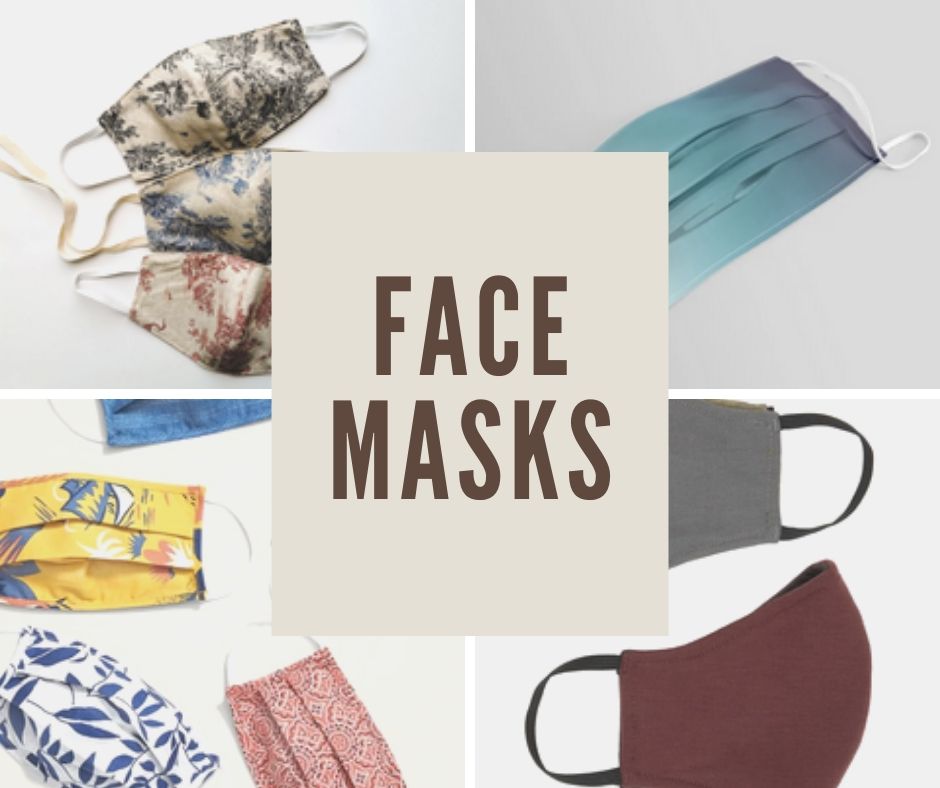Choosing a Face Mask…continued

Layers: There seems to be some agreement that having at least two layers is better. Does that mean three layers is better? Who knows? We do know that you do not want such thick material or so many layers that you have difficulty breathing.
Fabric: Some evidence suggests that a tightly woven cotton such as a quilting cotton, 600-count sheeting, or a t-shirt material can be very effective.
Attachments: There are three main styles: over the ear loops, four laces that tie behind the head and neck, and a modified elastic style with a loop behind the neck and over the ears. This is largely a matter of personal preference, although many people find it difficult to properly secure a tied mask. Recently we have seen the development of “ear saver” devices that go behind the head and connect one ear loop to the other. Many find this more comfortable, relieving pressure on the ear. One study has found that this makes the mask more effective.
Pockets: Some masks have a pocket for a removable filter. Quite a few studies of varying quality have been done on what material might be most effective for a filter. There really is no good data on this. It is clear, though, that some filters can be dangerous such as vacuum bag materials; these could cause you to inhale small particles called fines that can damage your lungs.
Mask style: There are two predominant styles of cloth masks: pleated accordion masks and the “Olson” style or sculptural fitted mask.
An accordion style mask is pleated and looks like a disposable mask. It should be fit snugly and comfortably over your face, covering your nose, and resting just below your chin.
The Olson-style mask is named for Lyla Mae Olson, a nurse who worked during the Great Depression and developed and wrote about improvised equipment for patient care. These masks have a pleat down the center and are cut to dip below the bridge of the nose and under the eyes. Ideally they should have a bendable wire or tab sewn in at the bridge of the nose to mold the mask to your face. A good fit should cover your nose from the bridge down and come just below your chin. The edges of these masks are designed without a gap and should fit closely all the way around. An Olson-style mask will have a bendable wire at the bridge of the nose to properly adjust the fit. There are also modified Olsen-style masks which dip a little further down below the eyes and create a larger air pocket between your nostrils and the mask itself. This is more comfortable for some users.
Finally, there are form fitting masks made of a stretchy material or lacking the center seam. Again, these should fit snugly and have the same coverage as the accordion and Olson style masks.
If you are a sewer or know one, we have found a modified Olson mask designed by Jesse Killian that allows you to adjust the fit to your face after taking two measurements. Here is a longer video on using the pattern and the pattern itself.
No matter what style you choose, the best mask is one that fits you snugly and is comfortable enough that you will wear it. Unfortunately, there is no test for fit that beats trying them on to find one that works for you.
Thank you to Jill Crittenden, who contributed to and provided a scientific review of this article. Jill is a research scientist at MIT and a microbiologist with a PhD in Biomedical Sciences. She is also a member of the N95decon consortium. This scientific consortium performs data-driven study of N95 filtering for face piece respirator decontamination.



